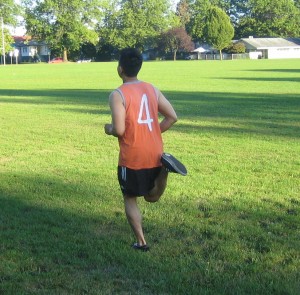Soleus muscle is also called the calf muscle which is located in the back of the lower leg. A strained calf muscle happens when there is a tear in fibers of the muscle and it can be caused by fatigue, tight calf muscles. Participating in sports increases the risk of developing a soleus strain. Strains can also be caused by overuse and a direct blow to the calf.
The soleus is a powerful muscle found in the back of the lower leg or the calf and helps with standing, dancing and walking. The action of the calf muscle and the soleus is plantar flexion of the foot which maintains the standing posture.
Common causes
- Strained soleus muscles can be caused by running uphill which forces to bend the knees more and putting plenty of stress on the soleus muscles.
- Performing high jumping and landing on the balls of the feet and the knees bend will cause strain on the soleus and if performed repeatedly, the soleus muscles can become injured.
- Improper alignment of the body such as pronated feet and the arches are dropped and the weight of the body is focused on the medial half of each foot and will cause an imbalance of muscle strength across the fibers of the muscle.
- A misalignment of the head and neck can also cause soleus injury in which the head is forward and not aligned properly while the other end of body are forced to balance. Stress is placed on the posterior area of the entire leg, making it susceptible to tearing and eventually an injury.

Treatment
- Take plenty of time to rest, especially the affected leg. Avoid performing exercises and participating in sports after sustaining the injury.
- Apply an ice pack or cold pack the affected leg for at least 15 to 20 minutes at a time at four times every day.
- Use a compression bandage such as an elastic bandage and wrap it around the affected calf muscles to help in minimizing the swelling.
- Elevate the affected leg or use a couple of pillows and keep the affected leg above the level of the heart on the first day.
- Seek medical help immediately if pain still persists for three days.
- Take the prescribed pain medication order to help lessen the inflammation and pain.
- Perform some stretching exercises once the pain is minimized in order to help lessen the chance of reinjuring the affected area. Perform towel stretches, heel raises and seated calf stretches, hold each stretch for at least 10 seconds. These exercises help strengthen and stretch the hamstring. Perform these exercises in one set at 4-6 times every day.
